How to Grow Peppers in Containers – The City Garden
No garden? No problem! Did you know you can grow peppers in containers? That means you can have a full garden right there on your patio this summer.
Another helpful guide for your Gardening 101 library.
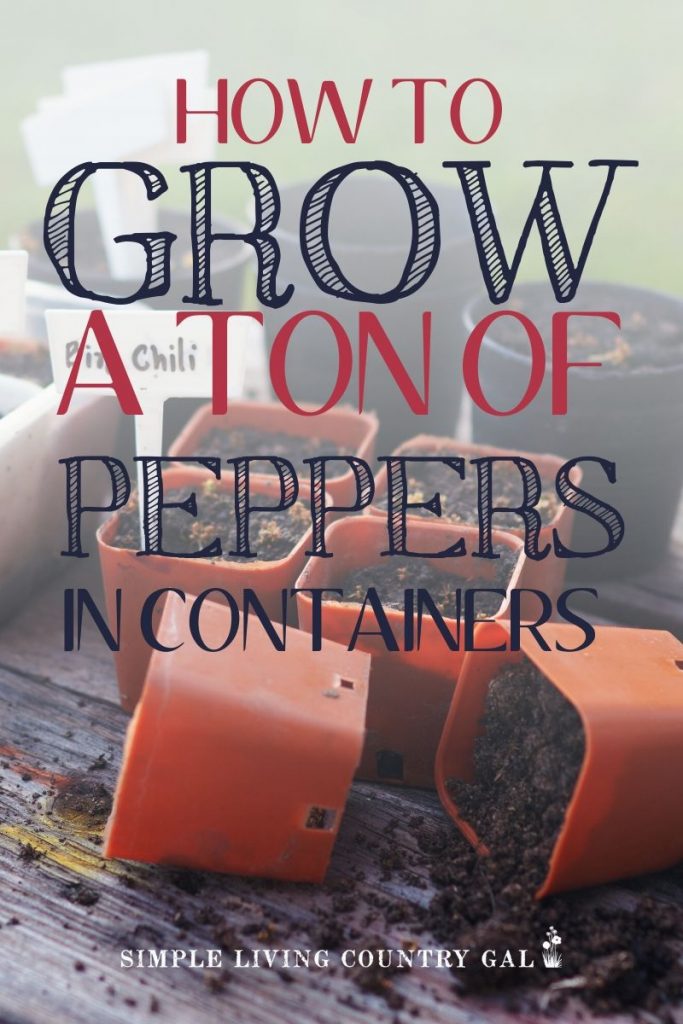
When it comes to gardening and growing your own food, there really aren’t any rules. No more is it required for you to have acres of land or even a huge backyard so you can give your family a kitchen full of fresh veggies.
All you need is some dirt, a pot, and a few seeds.
Yes, it’s true you can grow just about anything anywhere, and that is great news. Whether that be in a pot or other container, as long as you have good fresh soil, plenty of sunshine, and the right amount of water you can have a full garden right outside your back door.
The most important thing to remember when you grow your produce in containers is water. With the limited space found in a container, things can dry out pretty quickly. Forget to water things just one day, and you can damage your plants just from the heat of the sun. It is best to get yourself on a good schedule to ensure your plants never dry out.
The best time to water your garden or container plants is in the morning. This will encourage a healthier pepper plant, and it will also avoid evaporation that the sun can do if you water in the afternoon. Also, you will want to avoid watering your pepper plants in the evening unless you absolutely have to. Watering at night will encourage diseases and even pests.
Night watering tends to leave the plant’s leaves wet for a longer period of time. This can, in turn, make those leaves vulnerable to fungus. To prevent this from happening it is good practice to water in the mornings.
If you love spicy and hot foods, peppers are probably on your list of go-to staples in your kitchen. Adding a few varieties of this wonderful vegetable is a great way to round out your patio container garden.
Since a pepper’s plant characteristics are very similar to tomatoes they pair nicely together and even look great on any porch.
READ: HOW TO GROW A GARDEN IN THE CITY
How to Grow Peppers in Containers – The Jalapeno Pepper
This hot pepper is a great addition to any patio. A bush type plant that can fill out with dozens of peppers. One plant will produce quite a few peppers so keep this in mind when you choose your plants for this year’s garden.
It is perfect for salsas, tacos, chili, and omelets.
Even though most people consider this a hot pepper, it is actually considered a mild to medium heat. The heat you get all depends on the amount of membrane you use in your recipes since that is where the majority of the heat is held.
Sun
With these peppers, the most important thing to remember is they love to be warm. Make sure your soil is 70 degrees, and your plant is in full sun.
Water
Water often prevents the soil from drying out. To test the soil simply poke your finger into the ground. If it is dry, your pepper plant needs more water. If it is damp, your pepper plant needs some water. If it is wet, your pepper plant needs very little to no water.
When you are watering your plants, try to keep the water off of the fruit and leaves. This will deter any diseases from forming. Adding a layer of mulch around the base of the plant will help to keep the soil moist for a bit longer.
READ: MULCHING YOUR GARDEN – THE WHY AND THE HOW
Harvest
Pick your peppers when they are firm and bright green. Jalapeno peppers will commonly have cracks on the skin. This is normal and common at harvest time. If you happen to have lower-than-normal temperatures, you may notice cracks early on that can then turn into splits.
If left on too long, they will begin to turn red. Red jalapenos are sweeter and not quite as hot but perfectly fine to eat.
How to Grow Peppers in Containers – Bell Peppers
A wonderfully sweet pepper, this is by far my favorite one to grow, freeze, and to cook with. Bell peppers not only add a great flavor to any dish but they with so many colors and varieties, these peppers can liven up a dull dish with their beautiful colors.
When choosing a spot, pick an area that is at least partially protected from any strong winds. As fruits begin to develop, you may want to add support to your plant to help reduce strain on the base of the plant. Bell peppers can range from small to very large, so keep an eye on your plant and stake the main stem if needed.
A good tip for bell pepper plants is to pinch away new growth from the plant. This will regularly promote a bushier plant that will do very well in your pot producing a larger amount of peppers overall.
Sun
Bell peppers also like it warm, but not as much as Jalapenos.
60 degrees is a good temp to grow a nice healthy plant, along with at least 6 hours of direct sun.
Water
Keep your plants watered regularly so they do not dry out. Use the finger in the soil test I talked about above.
Since they are in pots, you will need to water more often than a regular garden, but a layer of mulch will help to keep things moist a bit longer.
Harvest
When your peppers are a nice shiny green, they are ready to harvest.
If you leave the peppers on the plant longer, the colors will change to red, orange, and even yellow, but this all depends on the variety of plants.
How to Grow Peppers in Containers – The Banana Pepper
The banana pepper is a yellow and medium-sized pepper and a member of the chili pepper family.
It is a long, slender fruit that resembles a banana with waxy skin and minimal seeds.
This pepper has a nice mild yet tangy taste, with some varieties that offer a nice level of heat. I love to use these in omelets, sauces, on pizzas, or homemade hotdog relish. If you like pepper rings, this is a great variety to use for that.
Sun
These plants also enjoy warmer weather and require at least 8 hours of sun.
Again you will want to keep them protected from heavy winds. You can also stake these plants to give them a bit more support which can be quite helpful if you live in a windy area as we do.
Water
Keep your soil consistently moist throughout the growing season. Using mulch will allow that soil to keep from drying out too quickly in the hot summer sun. I know I sound like a broken record, but when you grow your garden into containers, you need to double how often you water. Just one or two forgotten days can quickly damage your delicate plants.
Harvest
The most common color for these peppers is yellow, but if left on the plant, they will turn orange or even red.
The sooner you harvest, the more heat you will have. If you want a sweeter pepper, orange or red is your color.
Growing Peppers in Containers – The Red Chili
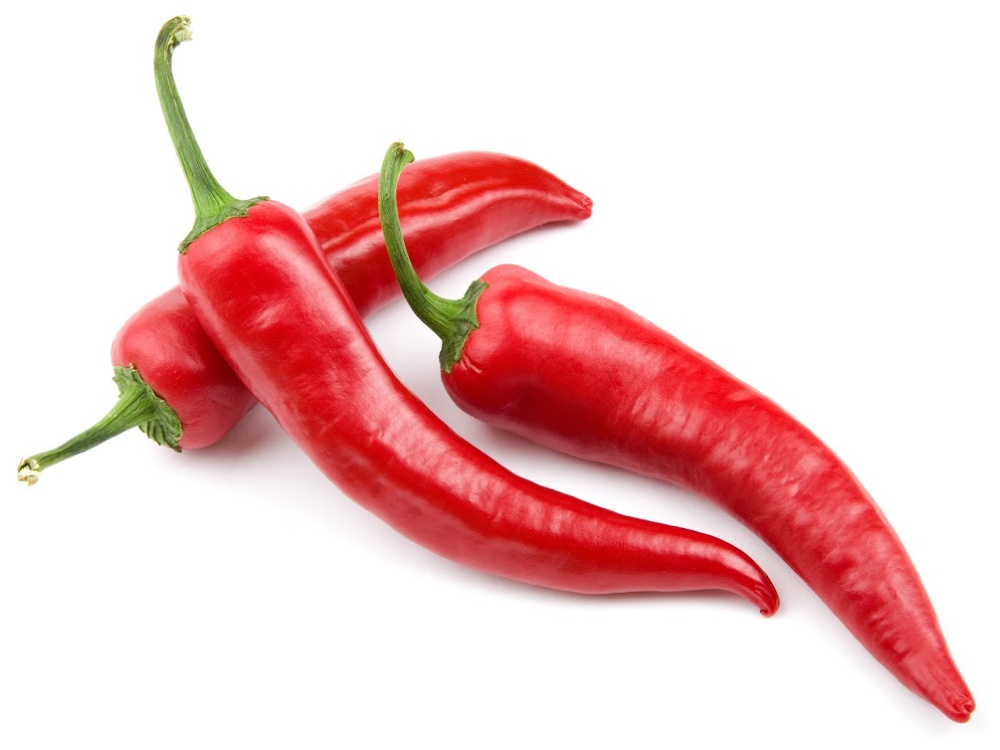
This is a great hot pepper that is perfect for many dishes that require a kick of heat that you might not get enough from the jalapeno.
These peppers come in a wide range of heat, so pick the best level of hot when you are choosing your plants. I like the long red chili and find it easy to freeze or dry, so I can use it throughout the year.
This variety of pepper plants can fill up completely with peppers, so you may want to stake it for extra support. If a plant has enough room, you can easily expect 100 peppers or even more!
Since these plants can grow quite large, you may have to transplant them into a larger container, so be aware of that.
Sun
Since these plants hate cooler weather, I would suggest keeping them indoors at night until the normal overnight temperatures are over 60 degrees.
During the day, a good 6 hours or more of sunlight is best for this plant. Again because this plant can get so heavy, keep it sheltered from high winds.
Water
Make sure you have really good drainage for this pepper plant and water often, especially when the days are really hot. To keep things moist, you will want to add a nice layer of mulch and replace it throughout the growing season as needed. Chili’s do well with dry/wet times, so you do not have to water every day unless the plant is completely dried out.
I read this tip online but have yet to test it out to see if it actually works. If you are looking for a hotter pepper, hold back on the water just a bit, and that is just what you will get.
Harvest
You can harvest these peppers when they are green, red, or yellow, each giving its own distinct flavor and level of heat.
How To Grow Peppers In Containers – Patio Gardening 101
Step#1 Choose the best pot
Choose a pot that is at least 15” wide and deep enough to allow those roots to grow.
The beauty here is that anything can be used as a pot.
A bucket, tote, washtub, feed sack, and even a very large bowl. If it’s big enough and has good drainage, you can grow a pepper plant in it!
Here are a few ideas just in case you are not happy with the above options!!
Step #2 Drainage
Make sure you have ample drainage in whichever pot you choose. The goal is to have enough water for your plant but not have your roots sitting in constantly wet soil.
If you are using a bucket, you will want to drill a few holes in the bottom to ensure water does not gather, risking possible rot to the roots.
You can also add a layer of stones to the bottom of your container. This will give an added layer of drainage for your pepper plant.
Step #2 Soil
If you want large beautiful pepper plants, then I suggest you use good quality soil. I like to use Burpee’s Organic Soil for my plants, especially with my vegetables. This soil is perfect and even works great in containers.
For me, using as much organic matter as possible is important to ensure I am growing the best peppers I can.
Step #3 Compost
Add some compost to your soil if you have any available.
Compost is the black gold of any homestead, but if you are a city dweller, you may not have any on hand. Now composting is easy to do no matter where you live, and I encourage you to give it a try. By adding compost to your potting soil, you will create the perfect foundation for a bit and beautiful pepper plant. You will also grow strong plants that will be better able to withstand any pests or diseases during the growing season.
I am absolutely in love with this adjustable compost bin by Geobin. It is super lightweight, will work just about anywhere, and it’s a great way to create your own compost even in the city.
READ: COMPOST 101- THE BLACK GOLD OF THE GARDEN
Step #6 Fertilizer
When you grow peppers in containers, you will want to add organic fertilizer at this point. Again I really love Burpee’s Organic Fertilizer since it is long-lasting and begins working immediately.
Pepper plants are heavy feeders and really do require some type of fertilizer to grow well.
Step #4 Planting
To grow peppers in containers, it is best to use seedlings. A seedling is a plant that has been grown from seed. A young plant that you can put directly into your pot or container and give yourself a jump start on the growing season. To plant pepper seedlings, gently remove the plant from its pot and loosen up the roots by rubbing your fingers on the soil base. This will decompress the roots and encourage rapid growth.
You can also gently squeeze the root base of the plant. Your goal here is to loosen things up. This will allow those roots to grab on quickly to the new soil and create a nice strong plant.
Step #5 Positioning
Place the plant into the center of the pot and add more of the organic potting mix until securing the plant in place. Using your hands, press down lightly around the base of the pepper plant to secure it into place.
Don’t worry if the soil covers a few of the small lower leaves; this will not hurt the plant at all.
Step #7 Support
As the plant grows, you may want to provide additional support. You can do this with a tomato cage or wooden stake next to the main center stem of the pepper plant will work perfectly.
Be sure to secure the plant gently and loosely to allow for more growth. I like to use twist ties making a very loose loop that includes the main stem of the plant and the stake you are using. This will allow the plant to grow without the risk of damage.
I absolutely love how more and more folks are moving their gardens up onto their patios. Even though I still have my larger garden down below, I love having a few plants nearby. Having my favorites right outside my door makes cooking much more enjoyable.
HOW TO GROW RESOURCES:
- How to Grow Sweet Potatoes for Beginners
- How to Grow Asparagus for Beginners
- How to Grow Chili Peppers for Beginners

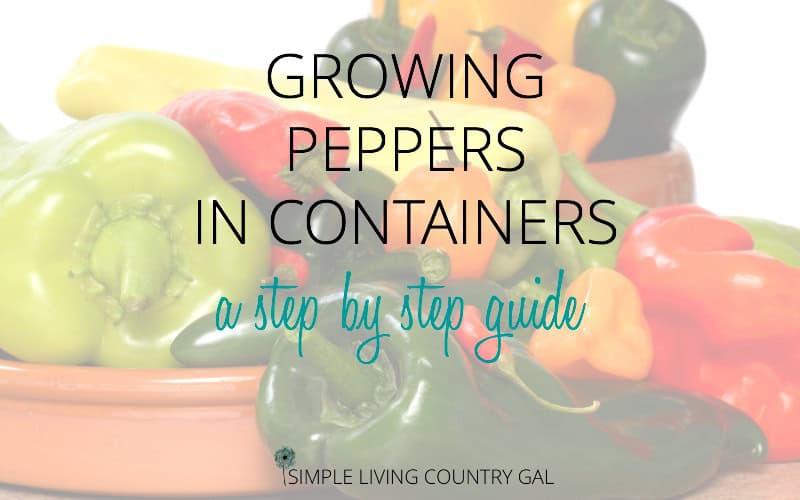
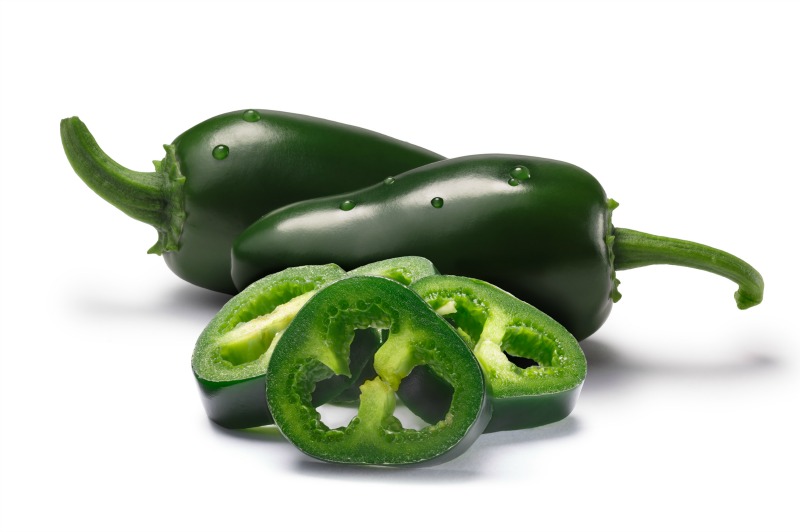
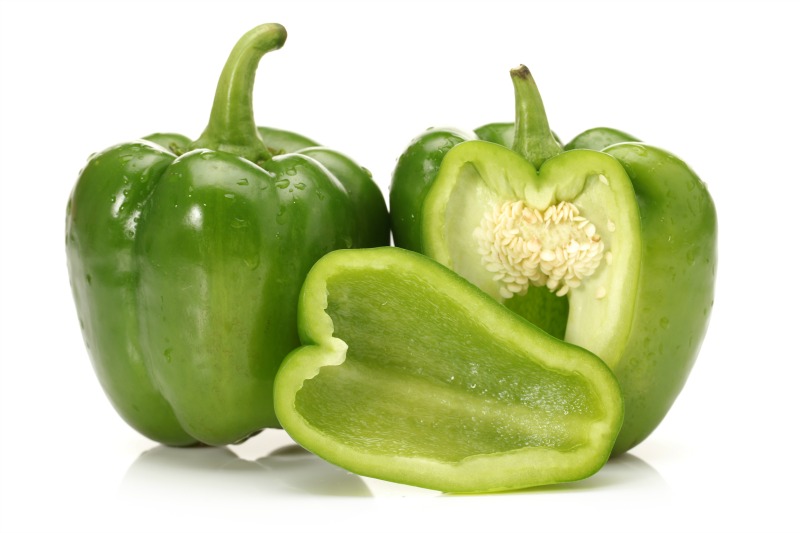
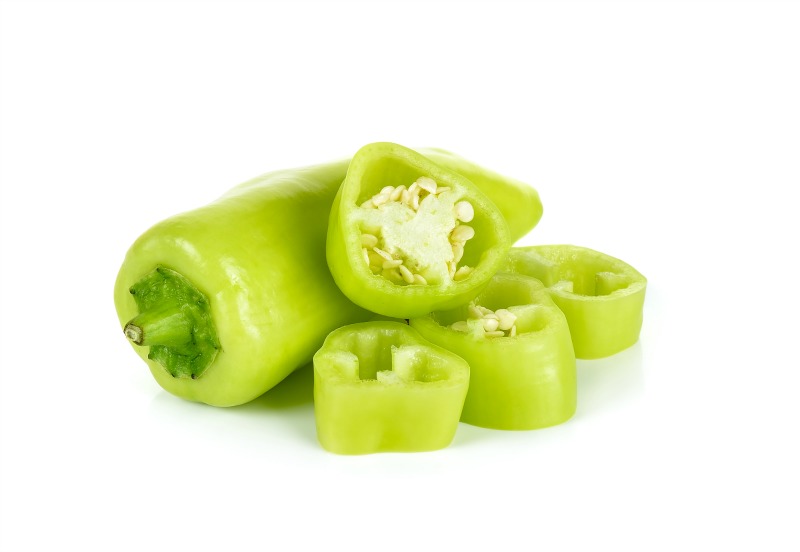
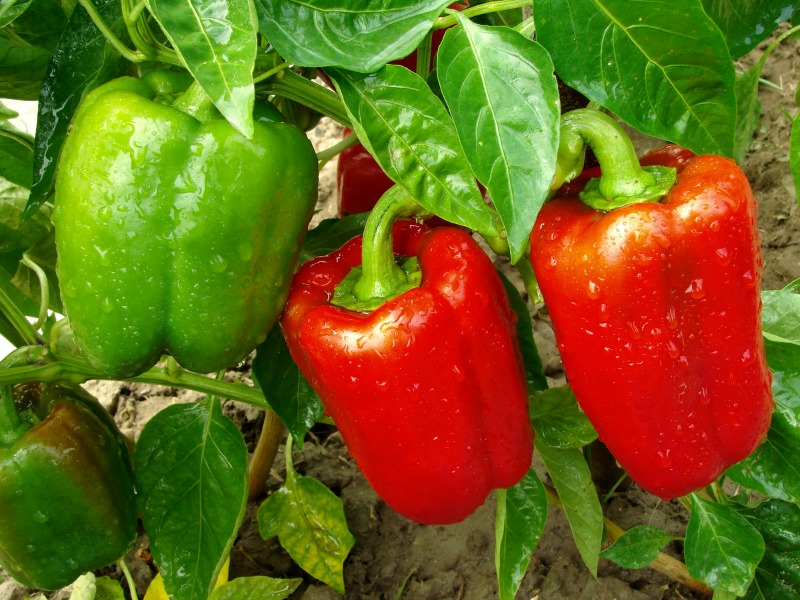
I have had a lot of trouble with peppers even though I am in the south! Thanks for this information, found you on the hop.
I hope you have an amazing pepper season this year Leilani!
Wow! A really great and informative post! I really liked the simple steps on growing in containers. Thanks for sharing your knowledge!